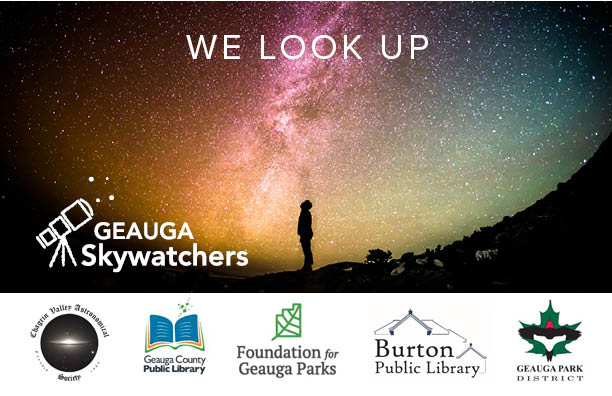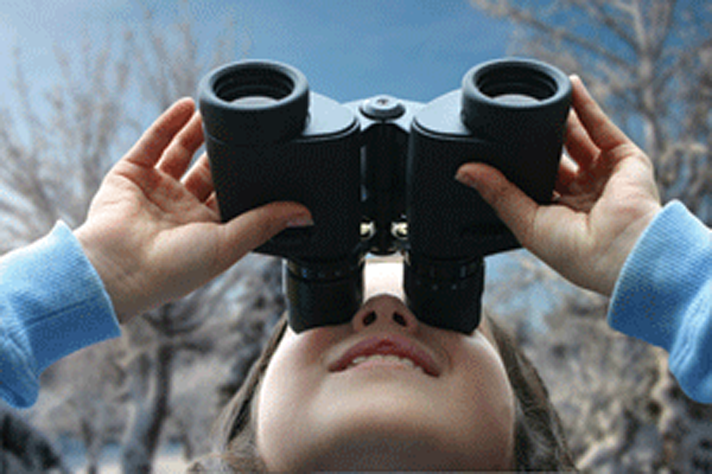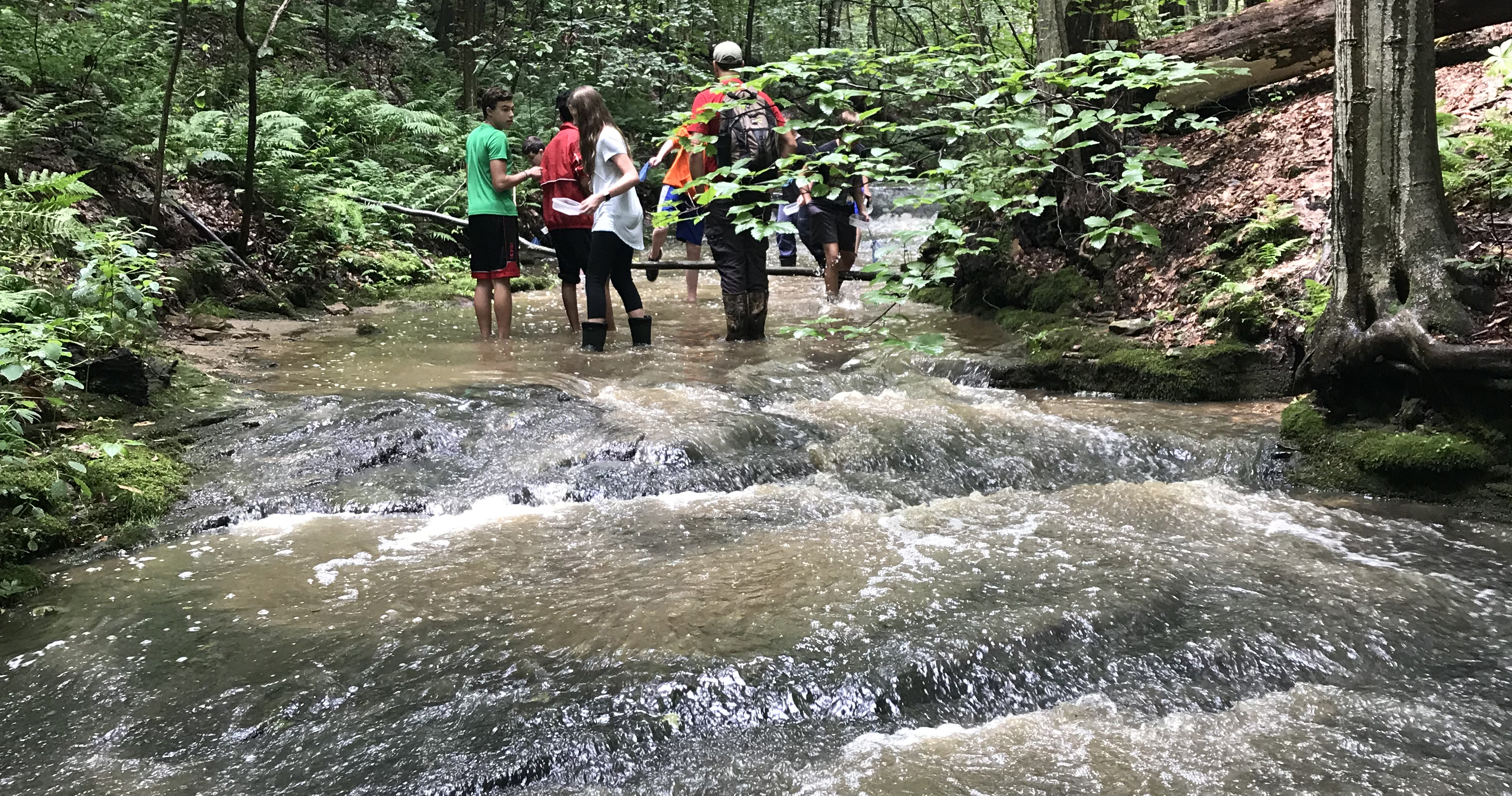Geauga Skywatchers is gathering of astronomy enthusiasts founded by a collaboration of organizations interested in promoting scientific thinking to the young and young-at-heart through the study and practice of astronomy.

The Foundation for Geauga Parks is pleased to be the fundraising arm for the Geauga Skywatchers Club, established in 2019 through a collaboration of organizations, to provide tools and training to aid members in the practice of astronomy.
Thanks to generous supporters to the Foundation, telescopes are now available for check-out from all Geauga County public libraries.
To borrow from Geauga County Public Libraries, click here
To borrow from Burton Public Library, click here
The club hosts monthly meetings at libraries and Geauga parks. Many local experts and their sophisticated equipment are on board to help teach the wonders of the universe while honing skills in mathematics, engineering, optics, observing, reason and critical thinking.
2024 Skywatchers Meetings
DATE LOCATION
January 8 GCPL - Geauga West Branch
6:30 PM-7:30 PM - Solar Eclipse
13455 Chillicothe Rd, Chesterland, OH 44026
February 5 Burton Public Library
6:30 PM-7:30 PM - International Women's Air and Space
14588 W Park St., Burton, OH 44021
March 4 GCPL - Thompson Branch
6:30 PM-7:30 PM - Total Solar Eclipse of a Lifetime
16645 Madison Rd, Thompson, OH 44086
April 1 GCPL - Chardon Branch
6:30 PM-7:30 PM - Solar Eclipse (*glasses distributed to registered participants)
110 E Park St., Chardon, OH 44024
May 6 GCPL - Geauga West Branch
6:30 PM-7:30 PM
13455 Chillicothe Rd, Chesterland, OH
June 3 GCPL - Geauga West Branch
6:30 PM-7:30 PM
16167 E High St, Middlefield, OH 44062
July 1 Burton Public Library
6:30 PM-7:30 PM - Solar System 101
14588 W Park St., Burton, OH 44021
August 5 GCPL - Bainbridge Branch
6:30 PM-7:30 PM - The Summer Triangle
One patch of the sky, the Summer Triangle, contains a huge collection of amazing sights! From the Milky Way, to black holes, to exoplanets, this easy-to-find region has a lot to offer. We’ll explore this patch of the summer sky and learn how to take in some of its best features.
17222 Snyder Rd, Chagrin Falls, OH 44023
September 9 GCPL - Bainbridge Branch
6:30 PM-7:30 PM - TBD
17222 Snyder Rd, Chagrin Falls, OH 44023
October 7 GCPL - Geauga West Branch
6:30 PM-7:30 PM - “The Nature of Constellations”
Learn the lore and natural history some of the animal constellations. A few of the constellations we’ll cover are Ursa Major, Cygnus and Aquilla.
13455 Chillicothe Rd, Chesterland, OH
November 4 Planetarium program at Observatory Park
6:30 PM-7:30 PM - Navigating the Night Sky
10610 Clay Street, Montville, OH 44064
December 2 GCPL - Chardon Branch
6:30 PM-7:30 PM - TBD
110 E Park St., Chardon, OH 44024
For additional details about club meetings or borrowing a telescope, check partner websites.
Collaborators are Chagrin Valley Astronomical Society, Geauga County Library System, Burton Public Library and Geauga Park District.


